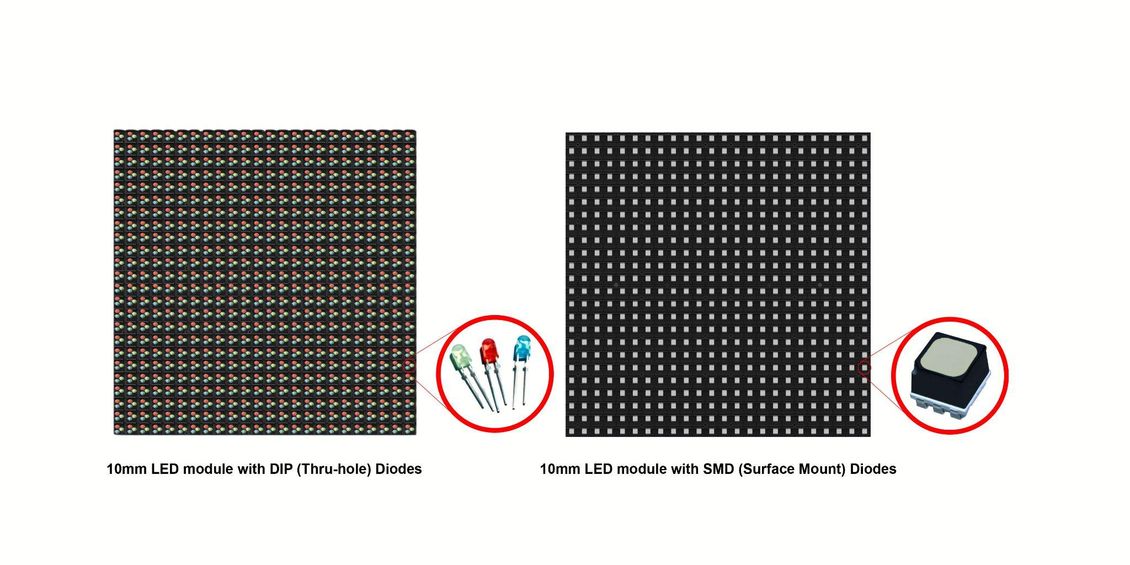
DIP, or dual in-line package, LEDs are constructed to resemble a traditional light bulb, where separate red, green, and blue LED bulbs are joined together in one package. The programmable light output of the small triad of bulbs combine to create millions of colors. Because of their relatively large package size, DIP displays typically have a high pixel pitch. DIPs are made with durable soldering connections, making them able to withstand harsh environmental conditions. Due to the limitations of their visibility off-angle, because of their high brightness, and because of their weather-resistant design, DIP bulbs are often used on outdoor signs where the viewer will be directly in front of the screen.
SMD, or surface mount diode, LEDs are lightweight LEDs built inside of an enclosed case that is soldered directly to the module circuit board. They are small in design, providing versatility in their screen configuration and offering a low pixel pitch. SMDs follow a more efficient, modern design that offers a high lumen output of about 50 to 100 lumens per watt. They can output bright, crisp, clear images, with true color reproduction. SMDs provide superior contrast, high resolutions, and vibrant images that make them great for both indoor and outdoor signs and screens.
So which one is better? Well, like most decisions in life, it depends. Typically, because it is newer and offers superior performance, Ad Art will specify SMD LEDs for most indoor and outdoor use cases. However, if environmental, budgetary, electrical, or other design constraints prevent SMD, Ad Art will happily specify DIP LEDs for a better fit.
We are committed to providing you with information that will help you make an informed decision. If you need further explanation or support, please feel free to contact us. We are available to assist with questions or issues not covered on our website.
© 2025 Ad Art Electronics Division - All Rights Reserved.